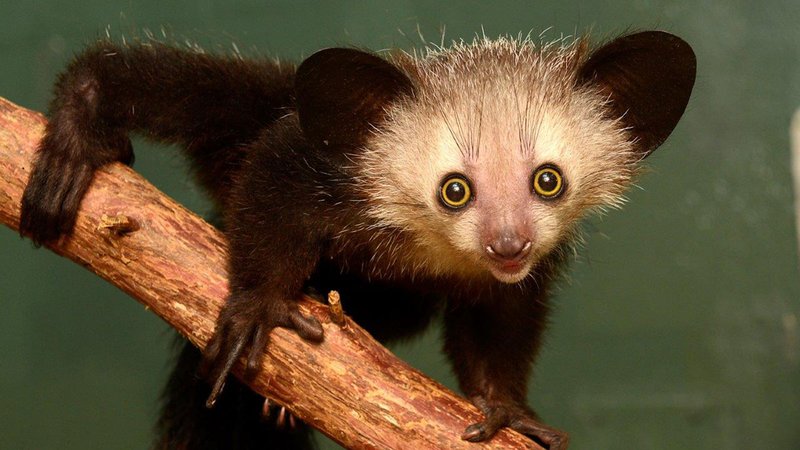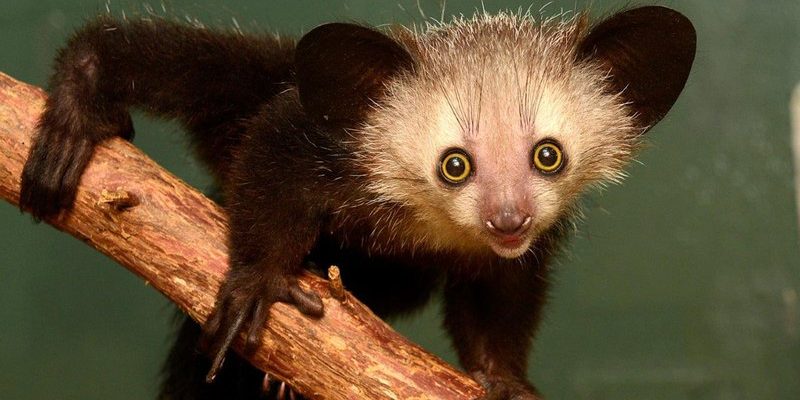
Conservation concerns are everywhere these days, and the aye-aye is no exception. It’s easy to overlook a creature that lives far away in Madagascar, but the reality is that many species, including the aye-aye, are at risk. The aye-aye isn’t just a quirky animal; it highlights larger issues about biodiversity and habitat loss around the globe. So why should we care? Because every species plays a role in our ecosystem, and losing even one can have ripple effects that touch us all.
The Aye-Aye: What is it and Where Does it Live?
The aye-aye (Daubentonia madagascariensis) is a type of lemur, and it’s as unique as it gets. These nocturnal creatures are primarily found in Madagascar’s rainforests. Imagine wandering through a lush forest at night and spotting an aye-aye perched on a branch, its big eyes glinting in the moonlight. They’ve adapted wonderfully to their environment, using their long, thin fingers to tap on trees to locate hiding insects. Rather than just eating from the outside, they dig right in, like a furry little excavator!
Aye-ayes have dark, shaggy fur that blends into their surroundings, which helps them avoid predators. Their big ears help them hear even the tiniest movements in the forest, making them exceptional hunters. But don’t let their quirky looks fool you; they have a vital role in their ecosystem. They help control insect populations by eating grubs, and in doing so, they contribute to the health of their forest habitat.
Current Status: Are Aye-Ayes Endangered?
You might think, “Okay, but are aye-ayes really endangered?” Well, the short answer is yes. The aye-aye is classified as endangered by the International Union for Conservation of Nature (IUCN). This means their population is declining and they face serious risks of extinction in the wild. The main threats come from habitat destruction due to logging and farming, as well as superstitions surrounding them.
Many people in Madagascar mistakenly believe that aye-ayes are omens of bad luck. This has led to local hunting and persecution. As a result, these beautiful creatures are often killed on sight, which further reduces their dwindling numbers. It’s a tragic misunderstanding, especially since aye-ayes are integral to maintaining a healthy ecosystem.
Threats to Aye-Aye Populations
Several factors put the aye-aye in jeopardy. Here are the main threats they face:
- Deforestation: The clearing of forests for agriculture and timber is a huge issue. When trees are cut down, aye-ayes lose their homes and food sources.
- Superstitions: Many locals believe the aye-aye is a harbinger of doom. This fear often leads to the killing of these creatures when spotted.
- Climate Change: Changes in climate can affect the aye-aye’s habitat, further putting pressure on their living conditions and food availability.
These threats create a perfect storm, leading to a shrinking aye-aye population. It’s a vicious cycle as their habitat continues to be compromised.
Conservation Efforts in Madagascar
You might wonder, “What’s being done to help the aye-aye?” Thankfully, there are several conservation initiatives aimed at protecting this unique species and its habitat. Various local and international organizations are working hard to raise awareness and promote conservation.
For starters, protected areas have been established in Madagascar to conserve habitats. These areas help to secure the forests where aye-ayes live, ensuring they have somewhere safe to thrive. Education is also a big part of the efforts. By teaching communities about aye-ayes and their importance to the ecosystem, there’s hope to reduce the myths surrounding these creatures.
Programs that promote sustainable farming practices can help reduce deforestation while allowing locals to grow food. This way, people can live harmoniously with nature rather than at its expense.
How Do We Help the Aye-Aye?
So, what can you do to help the aye-aye and make a difference? You might think it’s a daunting task, but every little bit counts! Here are some simple actions you can take:
- Educate Yourself: Learn about aye-ayes and the challenges they face. Knowledge is a powerful tool in conservation.
- Support Conservation Organizations: Consider donating to or volunteering with organizations that are working to protect aye-ayes and their habitat.
- Spread the Word: Share information about aye-ayes with friends and family. The more people know, the more we can push for change.
It’s important to remember that every action has a ripple effect. By getting involved, you’re contributing to the greater good of our planet and its amazing diversity of life.
In the grand scheme of things, the aye-aye may seem like just one small creature in the vast world of wildlife. However, their survival is a reflection of the health of our planet. With habitat protection, education, and conservation efforts, we can work together to secure a future for the aye-aye and protect the biodiversity of Madagascar.
Honestly, our planet is like a massive jigsaw puzzle, where each species is a piece that fits into the bigger picture. Losing even one piece can affect the entire image. So, let’s make sure we do our part to help creatures like the aye-aye thrive. After all, wouldn’t it be a shame to lose something as unique and wonderful as they are?

